Clootie wells
Ancient Scottish Healing Practices Cause Environmental Concerns
~ by Anjelica Singer
MUNLOCHY – Park ranger Kirsty Knight stood among the cluster of colorful cloths surrounded by the sound of trickling water and pointed at a blue, disposable face mask tied to a tree branch.
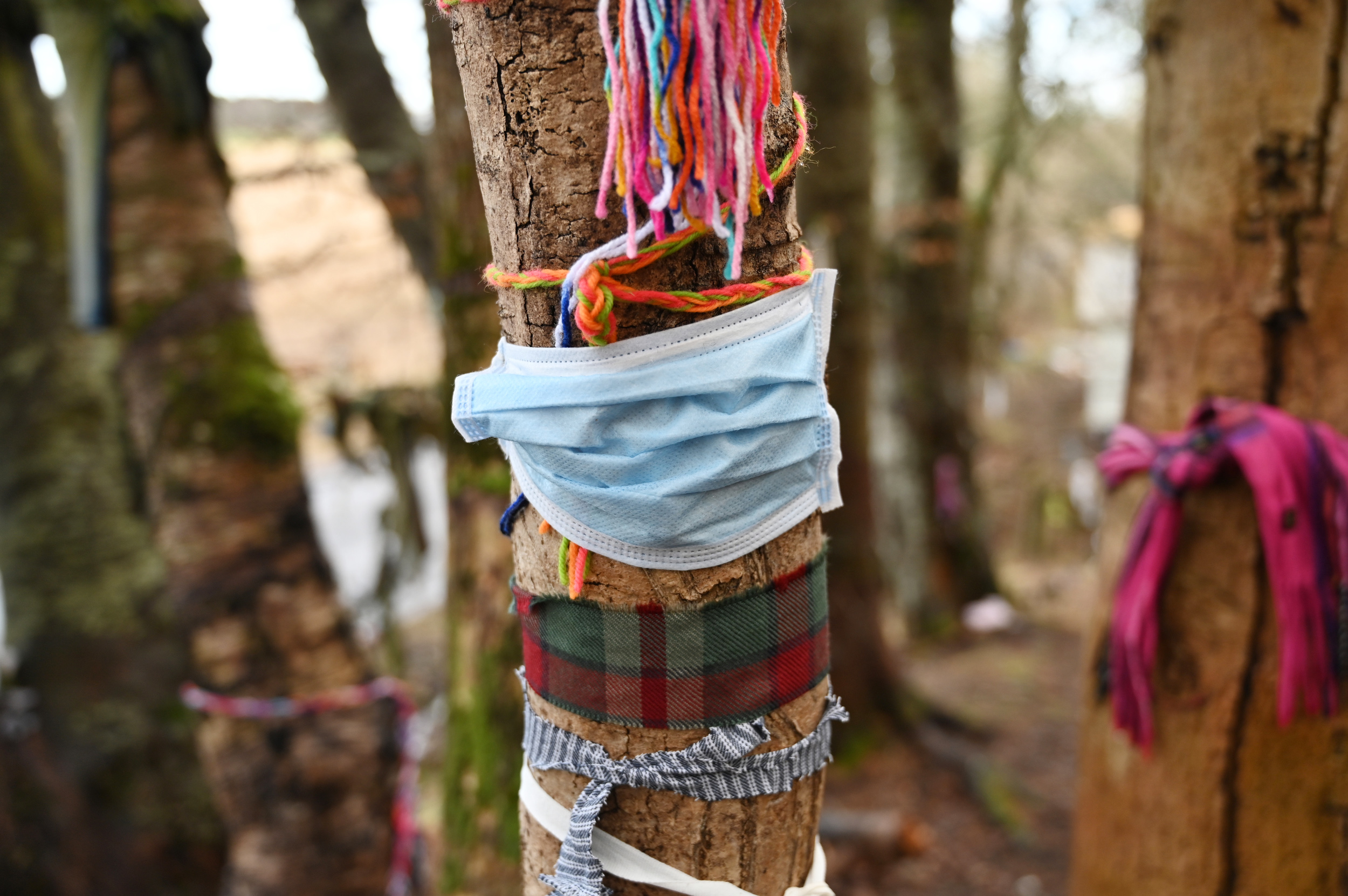
“That would be the type of thing we would remove straight away,” Knight said. “But it gets quite difficult to know what to remove and what not to remove, especially with what has happened.”
In the midst of a global pandemic, townspeople and visitors alike near this city nestled in the rural Scottish Highlands are looking to benefit from the healing powers of a centuries-old Celtic tradition – but doing so has set off a kind of fury among some environmentalists.
People are coming to what are known as clootie wells, where they seek cures for themselves or loved ones through an ancient ritual. They take a piece of cloth or “clootie,” dip it into the well water and hang it from a nearby tree. Then they hope that as the clootie disintegrates, the sickness also vanishes thanks to the healing powers unleashed by the ritual.
With the COVID-19 pandemic, “people are looking for some other external, new help,” said Susanne Macdonald, secretary of the Gaelic Society of Inverness. “It just shows you that, despite how modern we are, we are still hanging on to these old, ritualistic, sort of spiritual practices. It is really interesting.”
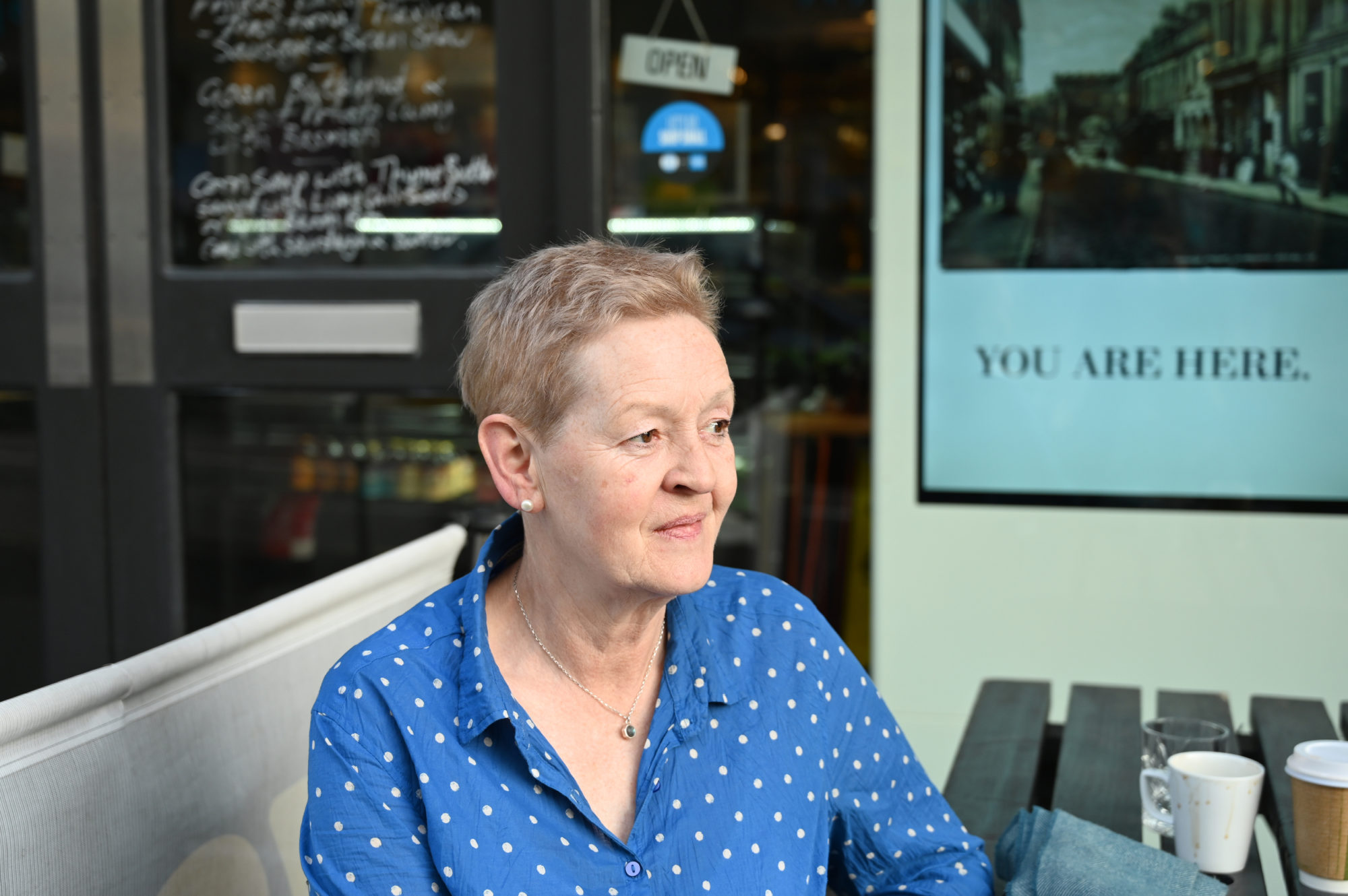
But this ritualistic and spiritual practice has run afoul of something else: modern science – specifically, COVID-19 masks, as well as other clooties made of synthetic materials. They do not degrade, and beyond looking unsightly, they create other problems.
Knight, a park ranger for Forestry and Land Scotland, the government agency that oversees the country’s woodlands, looks after the area near Inverness where Munlochy’s Clootie Well is located. She said it is her job to remove the masks —especially the disposable ones — and other non-biodegradable items.
“Because people might not necessarily understand the message and meaning behind the well, people are dipping the plastic, disposable masks into the well and then tying them on to the tree,” Knight said. “It can cause real issues for the likes of squirrels and birds because they can get tangled in them.”
Knight said the number of masks and other litter grew during the height of the pandemic when her staff was in lockdown. Knight and her colleague removed seven trash bags of litter, including masks. She said the purpose of the masks was to heal others of COVID-19, or to make “well-wishes” that loved ones would not get COVID-19 — although masks were also sometimes the only items tourists had to tie on the trees.
Sitting at the foot of the small hill leading to the well’s path, just right off a dirt parking lot, is a sign explaining the well’s history and a map of the woodland trail. On the top of the sign are the words “Keep It Natural” and a plea: “Please only leave small, biodegradable offerings at the well. It’s said that illness will disappear as the cloot rots away, so polyester won’t help you!”
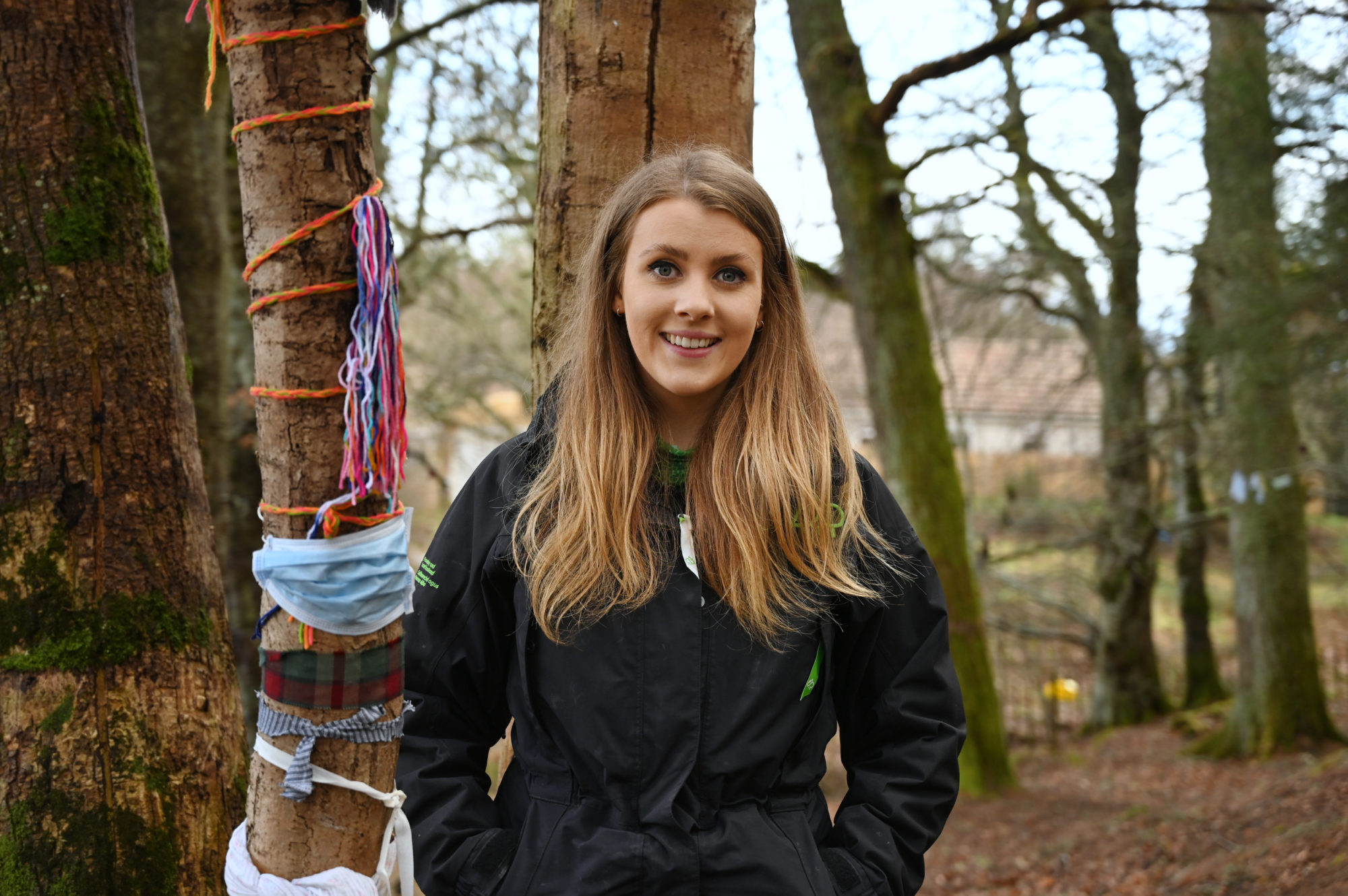
Knight said in centuries past, when there was no plastic, cloots were made from wool or cotton. Those are the materials that her agency encourages people to use.
“Unfortunately, a lot of people just sail past this sign and don’t even read it,” Knight said. “People have said things online that … you can do your own thing.”
One day in early March, Knight walked through the mud and up the uneven pathway, and she was soon surrounded by a colorful array of clooties tied to the trees from the highest to the lowest branches.
Among the items on display were an orange plastic car freshener, shoes, a T-shirt, a pair of red underpants, lots of COVID-19 masks and some traditional clooties. Knight said some visitors must bring ladders to reach the highest points of trees.
Coins were visible in the well’s water, modeling the more well-known tradition of a “wishing well.”
Healing wells were scattered all over Scotland during the Pagan, pre-Christian era. The wells, which look more like springs, pour out pure water. Not only were the wells a source of fresh water for local communities for generations, but the water was also believed to have healing properties that drew pilgrims from far away.
Throughout Scotland, there once were over 600 wells that were in operation and believed to have healing powers, but only a few still attract visitors. These include Melshach Well in Aberdeenshire, St. Maelrhuba’s Well in Isle Maree and Loch Sheanta in Skye. Each of the wells is attached to specific healing powers, but it’s not exclusive to only Scotland. Thousands of healing wells could also be found in Ireland.
Macdonald of the Gaelic Society said she often visits one of the other very few remaining clootie wells, which is called St. Mary’s Well located in Culloden.
“Last time I was there, I also went through my own personal ritual—praying for my own family, and wanting the best for everybody, a sort of cleansing thing,” Macdonald said. “It’s a psychological process.”
Culloden, most famous for the 1745 battle that marked the final defeat of Scotland’s royal Stuarts in their effort to claim the British throne, is a 14-minute drive from Munlochy. St. Mary’s Well sits on the Culloden Battlefield Trail.
Macdonald said she recalls the strips of rags she would use to curl her hair overnight during the late 1960s as a young girl. She also remembers her mother and aunt taking those same types of strips to use as cloots for the clootie well on the first Sunday of May.
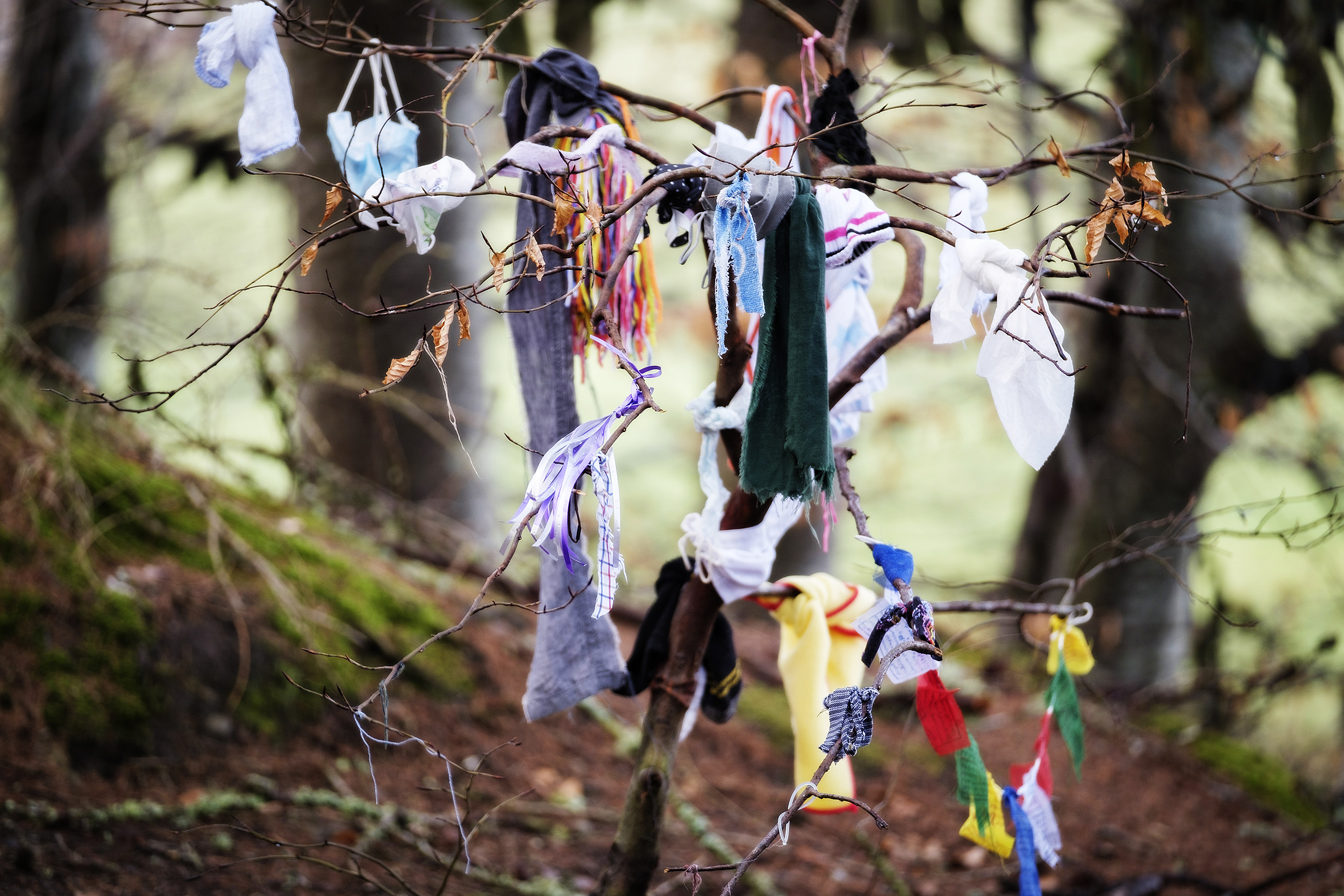
“It is a very old sort-of ritualistic thing, but obviously Christianity has come in, and we are supposed to reject all that superstitious stuff,” Macdonald said. “Somehow it is still kind of in people.”
Macdonald said that in 1946, over 4,700 people traveled to the Culloden Well by bus to seek cures for post-World War II victims who were damaged physically, emotionally and mentally. Similarly, in 1745, during the town’s famous battle, wounded clansmen arrived at the well to be healed and cleaned by women who were taking care of them. Some even died at the well.
“There is definitely something there,” Macdonald said. “There is a kind of peacefulness about it. You feel there is something ancient there.”
Karin Bowie, senior lecturer in Scottish History at the University of Glasgow, said that during the 16th and 17th centuries, these offerings of cloots were an everyday practice—until the Reformation.
The Pagan, or pre-Christian, practice was eventually adopted by the Catholic Church, and consequently, spirits or saints would be associated with these wells—who sometimes were associated with the capability of curing specific illnesses.
“The Reformers rejected the notion of saints altogether,” Bowie said. “If you wanted your son to become well, you should pray to God. Not to a saint. They wanted to stop people going to wells that were linked with saints in order to stop the practice of praying to saints, and the underlying rational for that is they believed it was superstitious.”
The accusations of superstitious behavior were synonymous with demonic activity, according to Bowie. As a result, a 1579 Act of Parliament made pilgrimages to wells a crime.
But here in the wooded area of the Black Isle of Munlochy, near the lake made famous by the Loch Ness Monster, the tradition has survived for hundreds of years.
“The fact that it is still alive today is really quite notable, because the church tried to stop people from doing that for a very long time,” Bowie said. “Both the sheriff and the church would have been trying to stop pilgrimages, but somehow this one survived. It is a remote place, the Black Isle, so that probably helped.”
Neil Martin, senior lecturer of Celtic and Scottish Studies at the University of Edinburgh, said the practice is rooted in community.
“The longevity of the tradition is the longevity of the community, so in a way, having things tied to a tree that you can look at, say it was hung up in 1988, that’s part of that awe,” he said. “That’s part of that sense of continuity.”
While the healing wells are a link to Scotland’s past, taking care of the sites is important for the future. The Forestry and Land Scotland did a “sensitive” clean-up of the Munlochy site in 2019. But recent tensions flared over removing Covid masks and other non-biodegradable items.
In January of this year, a local resident who has remained anonymous did an unauthorized clean-up.
According to Knight, the clean-up caused “massive controversy,” especially on social media. The local resident, who is assumed to be either environmentally conscious or insensitive, did not clear the site entirely but removed “proper” cloots in addition to litter.
Knight said there was a “witch hunt” for the resident, and that people were demanding a criminal investigation.
“It is a real sensitive topic when it comes to removing what somebody has tied to a tree to make a wish,” Knight said. “It gets quite difficult to know what to remove and what not to remove. Especially with what has happened quite recently, we have to be quite careful.”
Knight said that a Facebook group called “Friends of the Clootie Well,” established by local resident Claire Mackay, is a committee aimed to educate others specifically about Munlochy’s well and bolster community engagement – and the environment.
Environmentalist Anna Shepherd is not from Munlochy, but from Dorset, Scotland. Because of her concern of the current practice of clootie hanging, she joined the local Munlochy Facebook group to educate others on the “very serious environmental impact” the modern practice has.
Shepherd suggests that besides offering cloots that break down into microplastics, offerings should be small, biodegradable liquid offerings that leave no footprints. Shepherd said the offerings could be liquid because it is the intention of the offering that matters, as opposed to the materialism of the offerings.
“People don’t connect that their practice is actually harmful, and this is where the disconnect is in a modern context,” Shepherd said.
Because there are ancient offering locations near Shepherd in Cornwall, Scotland, she organized a community group that will pick up litter that is similar to the litter in Munlochy. One day, Shepherd said she hopes to see a UK-wide approach that mimics the local clean-ups.
“I would never leave a physical object anywhere, because I firmly believe that you should only take away memories and never leave your footprints,” Shepherd said. “The natural world doesn’t need our stuff. It needs our good intentions. It doesn’t need inappropriate clutter.”
In addition to local clean-ups, there are other types of community efforts to educate others on the clootie well practice. As part of an on-going “Health, Wealth and Happiness” project, led by Joe Setch, the Inverness Museum and Art Gallery started a craft activity called “Well Wishes” that is based on the tradition of the clootie wells.
The mission is to explore the ancient traditions of health care in the Highlands to modern day. The exhibit also has a focus on the COVID-19 pandemic and its impact on the Highlands.
“When it comes to COVID-19-with this type of project and Well Wishes, I think there was an understanding for our Well Wishes that we wanted to give people an opportunity to share whatever they might want to reflect about the pandemic,” Setch said.
Participants in the Well Wishes project receive a packet of materials that are biodegradable. The packet includes a piece of paper with three hazel tree leaves for writing “Well Wishes” and three strips of colorful, biodegradable cloth to help hang the leaves.
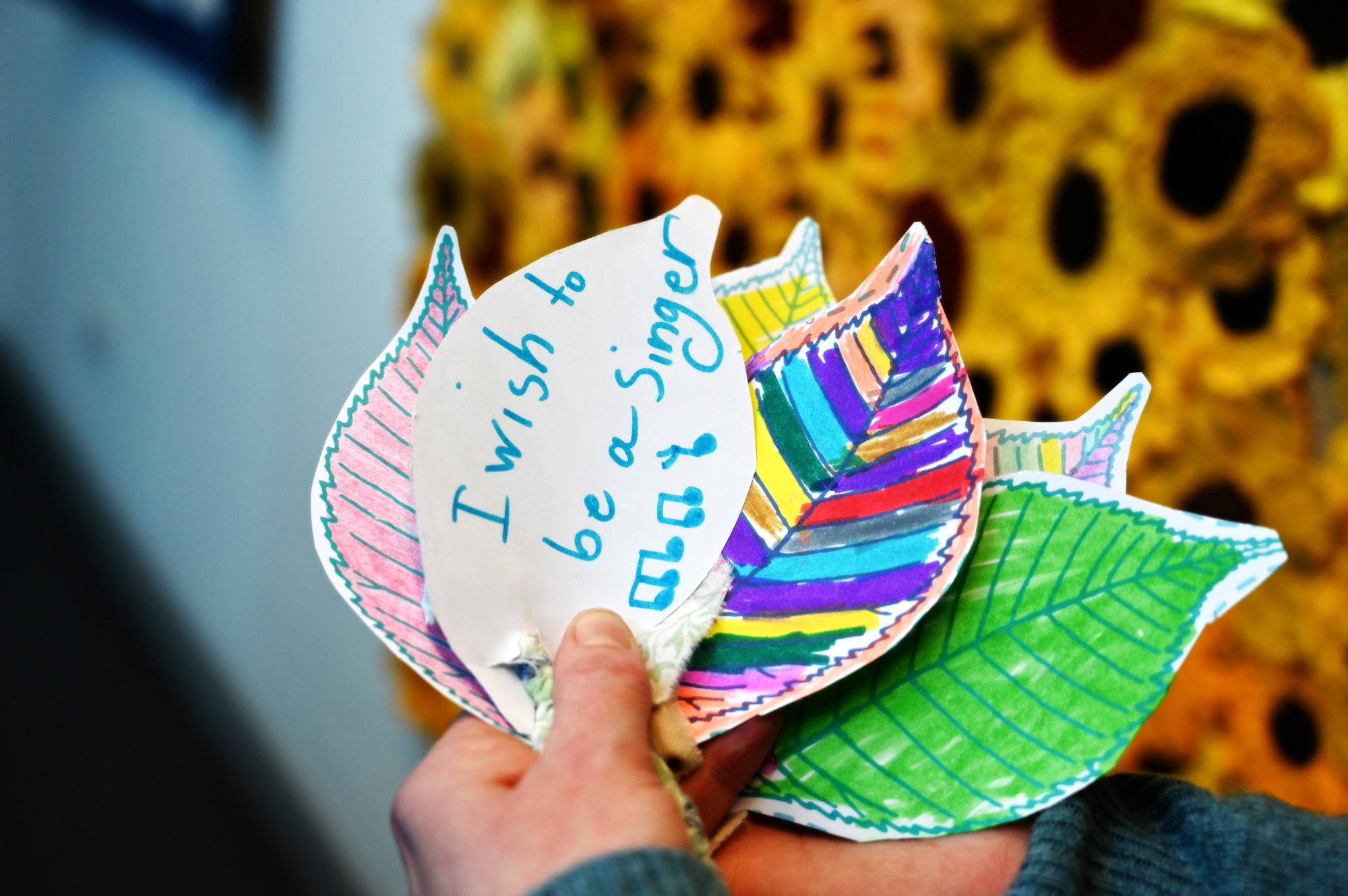
Setch said hazel leaves were selected because hazel trees typically surround clootie wells since they like wet, marshy ground and have a connection to healing wisdom in Gaelic mythology.
To mimic the process of clooties disintegrating, all materials used in the Well Wishes will be broken down when the project ends, and the compost created will support new plant life in the Highlands
“It feels like something that has potential for individuals to do something really fulfilling,” Setch said. “It leads to something more, and you are participating in something that has been done for thousands of years. You are a part of something bigger when you go to a site like [the clootie well]. You are following the footsteps of those that came before.”
4.22.2022
Anna Shepherd here, what a great article.
Just to mention that Cornwall and Dorset are counties in the south west of England, not Scotland! I would also like to ask Anjelica for permission to share some of her photographs used in this article for my #cleanerclootiecampaign